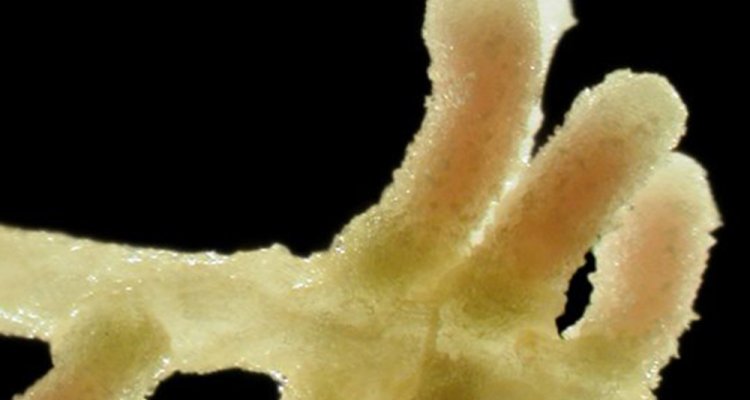
Geurts Group - Nodulation Engineering
Is it possible to engineer non-leguminous crop plants such that they can establish a nitrogen-fixing nodule symbiosis with rhizobium bacteria? This question was raised already in 1917 by two American researchers. In those days, it was discovered that legume plants, like beans, clovers and peas, possess a unique trait. Legumes can interact with nitrogen-fixing rhizobium bacteria, which results in the formation of new organs on the root of the plant, so-called nodules. Inside nodule cells bacteria are hosted as transient organelle-like structures that convert dinitrogen gas (N2) into ammonia. This enzymatic reaction is fuelled by carbohydrates derived from the plant. In return, the plant receives ammonia, which allows a nitrogen-rich lifestyle, and growth independent of available nitrogen sources in the soil.
A century of high profile research has uncovered many aspects of the legume – rhizobium mutualistic symbiosis, including the molecular signalling dialogue between both partners, the genetic networks controlling nodule formation and bacterial infection, the biochemistry of nitrogen fixation, and the evolutionary relation of the legume rhizobium symbiosis to other symbiotic interactions. However, despite all this in-depth knowledge, successful engineering of the nitrogen-fixing nodulation trait has not been achieved. Funded by the Bill & Melinda Gates Foundation, we -together with an international consortium- aim to achieve a breakthrough by providing a proof of concept of engineering nitrogen-fixing root nodules. Thereby in Wageningen the target crop is cassava.
To uncover an evolutionary blueprint of the nitrogen-fixing nodulation trait, we use Parasponia (Cannabis family). The genus Parasponia represents the only non-leguminous plant species that can form nitrogen-fixing nodules with rhizobium. Parasponia and legumes share the evolutionary origin of the nodulation trait, but soon after gaining the capacity to form nodules both lineages evolved independently. By comparing legumes, Parasponia, and non-nodulating sister species, essential symbiosis genes are identified. Subsequently, engineering constructs are designed and tested in cassava and other plant species. To achieve a relatively short “design, built, test cycle” in the engineering strategy, we use synthetic biology, highly specific reporter constructs, and optimized transformation protocols.